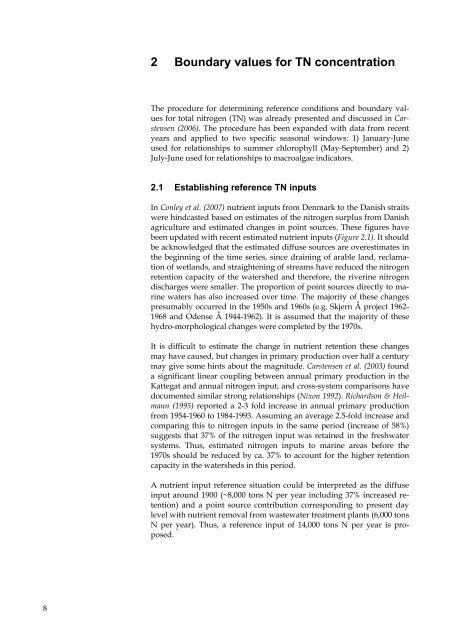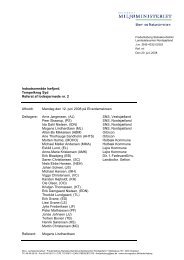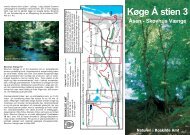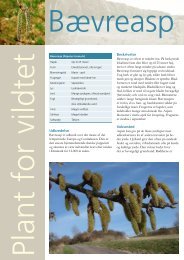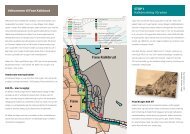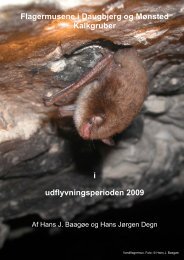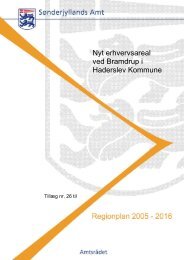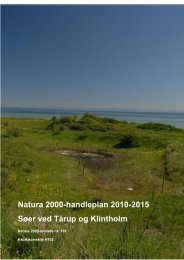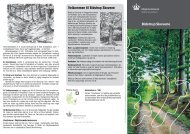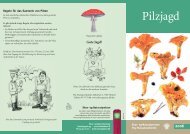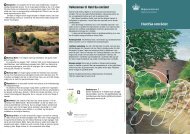Macroalgae and phytoplankton as indicators of ... - Naturstyrelsen
Macroalgae and phytoplankton as indicators of ... - Naturstyrelsen
Macroalgae and phytoplankton as indicators of ... - Naturstyrelsen
Create successful ePaper yourself
Turn your PDF publications into a flip-book with our unique Google optimized e-Paper software.
2 Boundary values for TN concentration<br />
The procedure for determining reference conditions <strong>and</strong> boundary values<br />
for total nitrogen (TN) w<strong>as</strong> already presented <strong>and</strong> discussed in Carstensen<br />
(2006). The procedure h<strong>as</strong> been exp<strong>and</strong>ed with data from recent<br />
years <strong>and</strong> applied to two specific se<strong>as</strong>onal windows: 1) January-June<br />
used for relationships to summer chlorophyll (May-September) <strong>and</strong> 2)<br />
July-June used for relationships to macroalgae <strong>indicators</strong>.<br />
2.1 Establishing reference TN inputs<br />
In Conley et al. (2007) nutrient inputs from Denmark to the Danish straits<br />
were hindc<strong>as</strong>ted b<strong>as</strong>ed on estimates <strong>of</strong> the nitrogen surplus from Danish<br />
agriculture <strong>and</strong> estimated changes in point sources. These figures have<br />
been updated with recent estimated nutrient inputs (Figure 2.1). It should<br />
be acknowledged that the estimated diffuse sources are overestimates in<br />
the beginning <strong>of</strong> the time series, since draining <strong>of</strong> arable l<strong>and</strong>, reclamation<br />
<strong>of</strong> wetl<strong>and</strong>s, <strong>and</strong> straightening <strong>of</strong> streams have reduced the nitrogen<br />
retention capacity <strong>of</strong> the watershed <strong>and</strong> therefore, the riverine nitrogen<br />
discharges were smaller. The proportion <strong>of</strong> point sources directly to marine<br />
waters h<strong>as</strong> also incre<strong>as</strong>ed over time. The majority <strong>of</strong> these changes<br />
presumably occurred in the 1950s <strong>and</strong> 1960s (e.g. Skjern Å project 1962-<br />
1968 <strong>and</strong> Odense Å 1944-1962). It is <strong>as</strong>sumed that the majority <strong>of</strong> these<br />
hydro-morphological changes were completed by the 1970s.<br />
It is difficult to estimate the change in nutrient retention these changes<br />
may have caused, but changes in primary production over half a century<br />
may give some hints about the magnitude. Carstensen et al. (2003) found<br />
a significant linear coupling between annual primary production in the<br />
Kattegat <strong>and</strong> annual nitrogen input, <strong>and</strong> cross-system comparisons have<br />
documented similar strong relationships (Nixon 1992). Richardson & Heilmann<br />
(1995) reported a 2-3 fold incre<strong>as</strong>e in annual primary production<br />
from 1954-1960 to 1984-1993. Assuming an average 2.5-fold incre<strong>as</strong>e <strong>and</strong><br />
comparing this to nitrogen inputs in the same period (incre<strong>as</strong>e <strong>of</strong> 58%)<br />
suggests that 37% <strong>of</strong> the nitrogen input w<strong>as</strong> retained in the freshwater<br />
systems. Thus, estimated nitrogen inputs to marine are<strong>as</strong> before the<br />
1970s should be reduced by ca. 37% to account for the higher retention<br />
capacity in the watersheds in this period.<br />
A nutrient input reference situation could be interpreted <strong>as</strong> the diffuse<br />
input around 1900 (~8,000 tons N per year including 37% incre<strong>as</strong>ed retention)<br />
<strong>and</strong> a point source contribution corresponding to present day<br />
level with nutrient removal from w<strong>as</strong>tewater treatment plants (6,000 tons<br />
N per year). Thus, a reference input <strong>of</strong> 14,000 tons N per year is proposed.<br />
8


